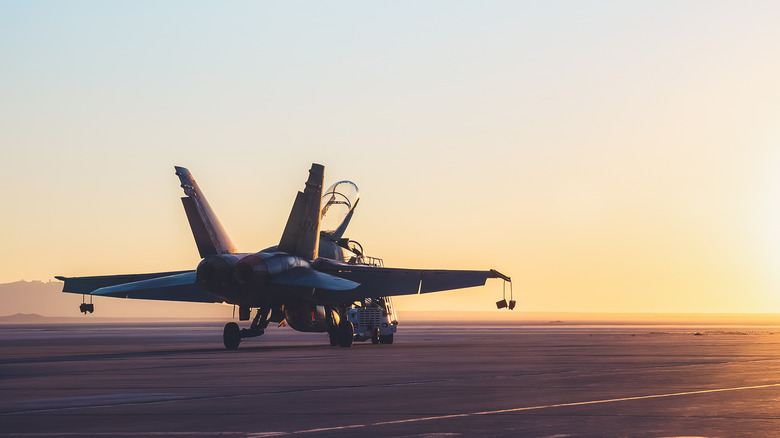
Nanostockk/Getty Images
Ancient peoples battled to master the sea. The earliest warships on record date back to Egyptian civilization. Ancient mariners took to the Nile River in boats constructed of lashed reeds and coated with pitch. The first missile ship was born when Macedonians began mounting catapults on warships. Romans took their land-fighting prowess to the sea, pioneering grappling hooks and inventing the first naval infantry. Advances in oaring strategies meant galleys became triremes, triremes evolved into liburnas, and the Vikings mastered the longship, exploring ocean and river alike in missions of conquest.
Control of sea lanes became the lifeblood of empires. England, a small island nation, rose to build the greatest empire in history, mainly due to its mastery of the sea. The Portuguese set up maritime schools, and the Chinese adventurer Zheng He built treasure ships that dwarfed Columbus’ fleet. Spain’s navy generated fabulous wealth during the Age of Exploration, yet mankind remained at the mercy of wind and tide. When the Mongols’ fleet appeared off the shores of Japan in 1274 and 1281, dangerous storms destroyed them each time, birthing the legend of the kamikaze — divine wind — that would rise to save the island nation in desperate times.
For millennia, sailing remained an incredibly fickle and dangerous pursuit. Naval nations were quick to embrace any new technology or method that would improve their odds of success, especially in a military mission. The technological revolution of the 19th century would turn naval warfare on its head.
Sail to steam: the industrialization of naval warfare
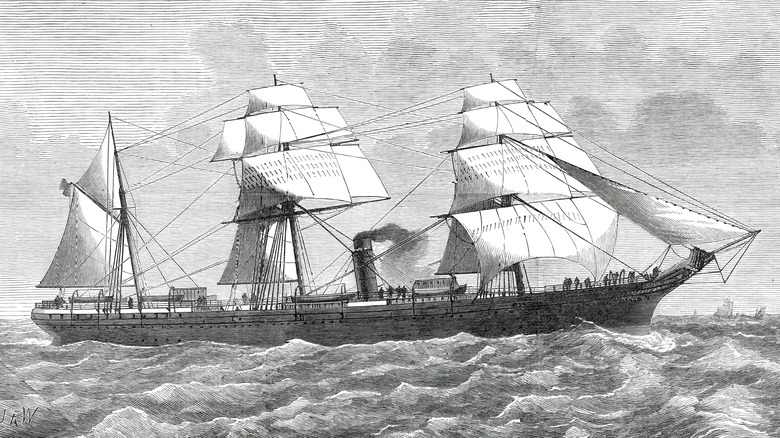
Heritage Images/Getty Images
Most wooden sailing ships before the 19th century were limited in scope. Even the strongest oaks, planted in forests by governments to ensure a steady supply for their ships, could not handle the stress of a vessel much longer than about 87 yards (80 meters). The increasing supply of iron during the 19th century changed that. And, like most new technologies, militaries did not take long to embrace the change.
The clash of the ironclad ships USS Monitor and CSS Virginia during the American Civil War marked a turning point in naval warfare. Their iron hulls were so strong that they were virtually impervious to cannon fire. Nor did they require sails; steam engines meant that taking to the sea no longer required the cooperation of wind, current, or tide. Sure, saltwater and metal have never gotten along, but the advantages were so significant the Navy would develop ways around that.
Thirty years after the clash, naval officer Alfred T. Mahan would shift United States maritime policy with his «The Influence of Sea Power Upon History» in the 1890s. In it, Mahan maintained that control of sea lanes equated to economic and military supremacy. The oceans were the roadways of world trade and conflict. By the early 20th century, ships were no longer machines of wood and sail but incredibly powerful artillery platforms cast of iron and steel. The nation with the most dominant navy could flex its muscles worldwide. Enter the battleship.
From battleship to aircraft carrier
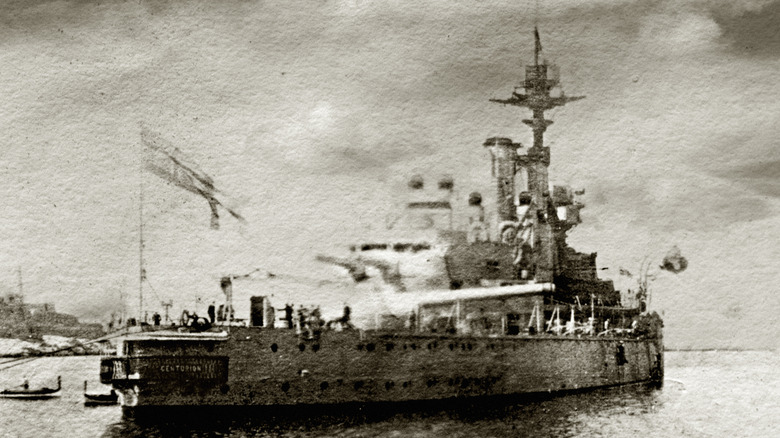
Duncan1890/Getty Images
On the eve of the most significant military conflict up to that point — the First World War — a naval arms race had been underway in Europe for decades. The militant atmosphere of the early 20th century, combined with the incredible technological advances of the Industrial Revolution, saw the death of sailing ships and the rise of the battleship.
Expansionism and militant societies saw increased international tensions during the first decade of the 20th century. A fierce naval arms race began as European nations battled to maintain and expand colonial empires. Germany and England, in a heated competition, wished to outdo each other by building the grandest possible fleet. England moved by launching the «World’s Most Powerful Battleship» — the HMS Dreadnought — on February 10, 1906. The Dreadnought proved to be one of the most revolutionary warships in history.
Germany, already building two battleships per year for several years, immediately declared they would match the quality and firepower of the Dreadnought. The United States allegedly bought the plans for the Dreadnought from a British spy to build their own.
The battleship was the primary naval weapon when the First World War broke out in 1914. Enormous clashes between naval fleets with battleships occurred at Jutland and the Gulf of Riga. The strategic significance of these enormous dreadnoughts was critical to controlling the sea. By the war’s end, there was little reason to suspect they would be largely obsolete within 30 years.
The Fusion of Sea and Air Power
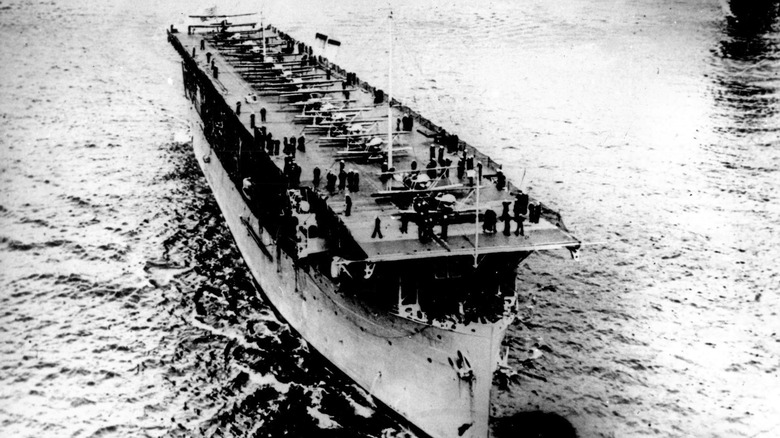
Arkivi/Getty Images
Aviator Eugene Ely flew a plane from a special deck built on the U.S. cruiser Birmingham in November 1910, then on January 18, 1911, he successfully landed on the quarterdeck of the battleship Pennsylvania, demonstrating the proof of concept for naval-launched airpower. During the war, the British expanded on this concept with the first ship with a dedicated flight deck, the HMS Argus. The war ended before the Argus went to sea, but an American army officer took note.
William «Billy» Mitchell was a Signal Corps officer in the United States Army. He took private flying lessons as deputy commander of an aviation section during World War I. Ultimately placed in command of all aerial units in France. He became a fierce advocate for air power after the war, ticking off his superiors with his vocal and sometimes combative defense of military aviation.
Though Eugene Ely had proven the concept of naval aviation and the HMS Argus the possibility of launching and collecting aircraft, doubters in the U.S. military brass refused to believe the efficacy of attack aircraft in naval warfare. On July 21, 1921, Mitchell personally led a squadron of aircraft on an attack of the former German battleship the Ostfriedland in the Chesapeake Bay. The old guard of naval officers, some described with «tears in their eyes,» per the U.S. Department of Defense, watched as Mitchell sank the battleship with bombs launched from planes. The era of the great battleship was ending. The United States Navy commissioned its first purpose-built aircraft carrier, the USS Langley, in March 1922.
Aircraft Carriers in World War II
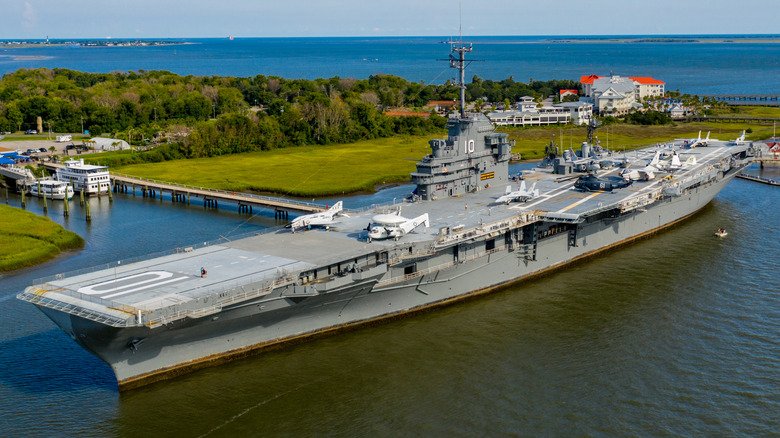
Felix Mizioznikov/Shutterstock
The aircraft carrier soon became the standard of force projection around the globe. Not only could increasingly advancing aircraft and technology perform the old missions of the battleship, namely softening coastal defense, providing air cover, and destroying enemy ships at a distance, but they could carry an entire military force thousands of miles from home territory.
When the Japanese ejected the Russians from Manchuria at the Battle of Khalkhin Gol, the United States and Japan were on a collision course for Pacific domination. The conflagration kicked off during the Battle of Pearl Harbor when Japan launched a surprise attack against the American fleet in Hawaii. Utilizing six aircraft carriers, they traveled thousands of miles across the ocean and launched an aerial bombardment aimed at crippling the U.S. Pacific Fleet.
Fortunately for the Americans, their own aircraft carriers were not present at Pearl Harbor that day. With their ability to project power left intact, the United States soon engaged in an island-hopping campaign. Aerial naval battles at Midway, the Eastern Phillippines, and Leyte Gulf destroyed Japan’s ability to wage war. They also demonstrated a broader truth: naval warfare had taken to the air once and for all. From World War II onward, aviation would be the linchpin of maritime power.
Nuclear Power and the Jet Age
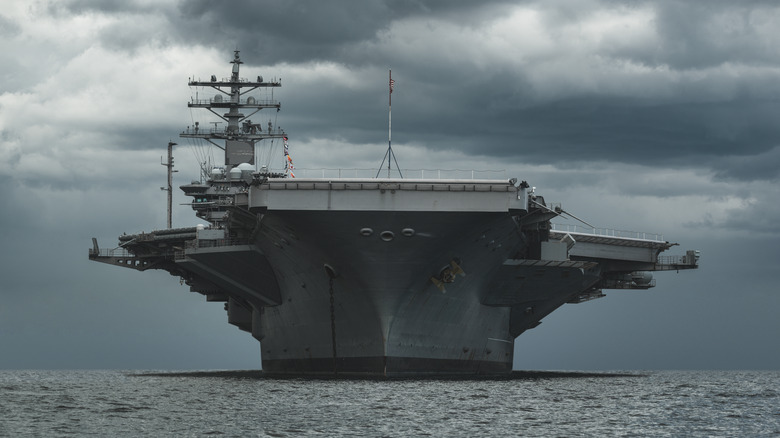
Shaunl/Getty Images
The Second World War ended with the devastating nuclear bombing of Hiroshima and Nagasaki, but another conflict loomed. The Cold War between the United States and the Soviet Union would give rise to military brinksmanship that would push the capabilities of aircraft carriers ever further. Not only would the rise of the jet age make massive improvements to aviation, but engineers harnessed nuclear reactors to propel ships.
The United States Navy commissioned the first nuclear-powered aircraft, the USS Enterprise, on November 25, 1961. The British Navy commissioned the first battleship without sails in 1871. Naval propulsion had evolved from sail to nuclear reactor in just 90 years.
Aircraft carrier range was no longer limited by fuel supply. Military jets enjoyed the ever-improving range and military capability. The space once reserved for fuel storage on American aircraft carriers could now be utilized for more aircraft, armament, and infantry forces. The aircraft carrier became not just a floating runway but a task force capable of waging war upon, or even invading, lands on the opposite side of the globe. The aircraft carrier is the centerpiece of global power projection.
With proven results as the premier global battle platform, nations worldwide have sought to become capable of fielding aircraft carriers. However, building and maintaining even a single aircraft carrier is expensive and bewilderingly technical. The current balance of aircraft carrier-wielding nations is incredibly lopsided. Like nuclear power, not every nation can afford to develop and maintain its own carrier fleets.
Carriers into the 21st century

Aleh Varanishcha/Getty Images
A grand total of 50 aircraft carriers roam the seas: 21 for planes and jets, the other 29 for helicopters or other light aircraft. Fewer than 20 nations on Earth operate aircraft carriers, according to World Population Review.
It’s hard to say what the future has in store. A naval officer in 1800 could never have envisioned the death of sail and the rise of combustion or nuclear-powered ships. As currently being demonstrated in the war in Ukraine, drone technology is becoming an option for nations unable to equip attack or reconnaissance aircraft to wage war. Perhaps the day is approaching when the behemoths of the sea and the human-piloted aircraft that launch from their decks are as obsolete as the wooden USS Constitution.
If the past has taught us anything, military considerations drive innovation, and technology moves blisteringly fast in unexpected directions. The reality of global conflict and security may look completely different in a century. Some nations may have already missed the boat by the time they reach their aircraft carrier goals.